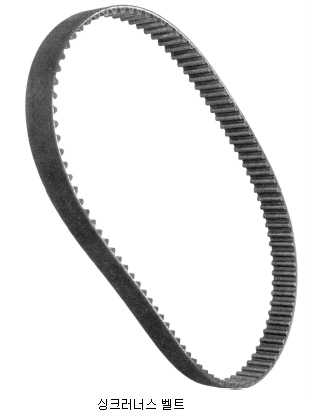|
This heading covers conveyor or transmission belts and belting, wholly of vulcanised rubber, or of textile fabric impregnated, coated, covered or laminated with rubber or made from textile yarn or cord impregnated, coated, covered or sheathed with rubber (see Note 8 to this Chapter). It also covers belts or belting of vulcanised rubber reinforced with glass fibre fabric or glass fibres or with cloth of metal wire.
Belts and belting (other than belts or belting wholly of vulcanised rubber) generally consist of a carcass made up of several layers of fabric, whether or not rubberised (e.g., warp and weft fabric, knitted or crocheted fabric, layers of parallelised yarns) or of steel cable or strip which is wholly covered with vulcanised rubber.
The heading includes belting in the length (for subsequent cutting to length) as well as belts already cut to length (whether or not joined end to end or fitted with fasteners); it also covers endless belts.
All these goods may be of rectangular, trapezoidal (V-belts and V-belting), circular or other cross-section.
Belts or belting of trapezoidal cross-section are those products having one or more "V" shapes in cross-section. The "V" surfaces are designed to provide good wedging action and minimum slippage along the sides of the sheave. The category includes, e.g., belts or belting having a cross-section with :(A) A single trapezoidal shape (B) Trapezoidal shapes on opposite sides. (C) Two or more trapezoidal shapes on the same side (V-ribbed).  |
A V-ribbed belt is an endless belt with a longitudinally ribbed traction surface which engages and grips, by friction, pulley grooves of similar shape. V-ribbed belts are a type of V-belt.
Grooves (whether moulded or cut) in V-belts or belting reduce bending stress and help dissipate the heat from rapid flexing; this is especially important on drives where the belts run over small sheaves at high speeds. Grooves, other than longitudinal grooves, have no impact on the classification of V-belts or belting.
Synchronous belts (see illustration) are designed to transmit power while maintaining a constant rotational relationship between sheaves. The completed product is often simply referred to as a timing belt. Notches, usually on the inner surface of the belt, are provided to operate smoothly with notched sheaves. Synchronous belts or belting do not have a trapezoidal cross-section.
Belts of this heading may be presented in the form of a sleeve (tube) from which finished items can be cut; this presentation does not affect classification.  |
Synchronous belt
Conveyor or transmission belts or belting presented with the machines or apparatus for which they are designed, whether or not actually mounted, are to be classified with that machine or apparatus (e.g., Section XVI).
|